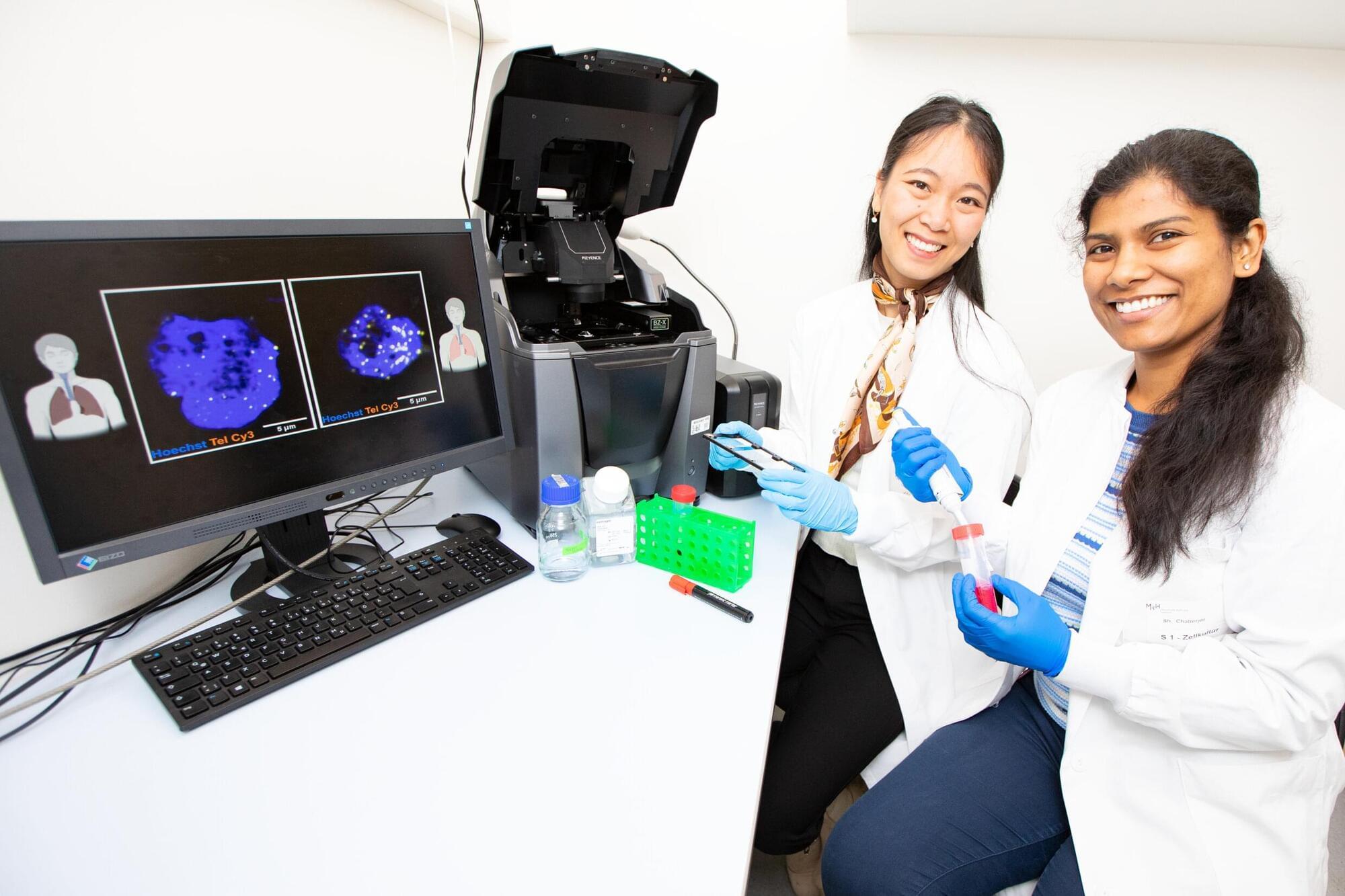Pulmonary fibrosis—also known in technical terms as idiopathic pulmonary fibrosis (IPF)—is a rare but life-threatening disease. It causes scarring of the connective tissue between the functional tissue of the lungs, leading to increasing shortness of breath. Current treatments can slow the progression of fibrosis, but cannot cure it. The average life expectancy after diagnosis is only four to six years. New therapies are therefore urgently needed.
A research team led by Professor Christian Bär, research group leader at the Institute for Molecular and Translational Therapy Strategies at Hannover Medical School (MHH), and his colleague Dr. Shambhabi Chatterjee has turned its attention to the interior of cells, or more precisely to telomeres. These are protective caps at the ends of chromosomes, the carriers of our genetic information.
With each cell division, the telomeres shorten a little until they reach a critical length and the genes they protect could be damaged. Then the cell stops dividing and the tissue ages.







